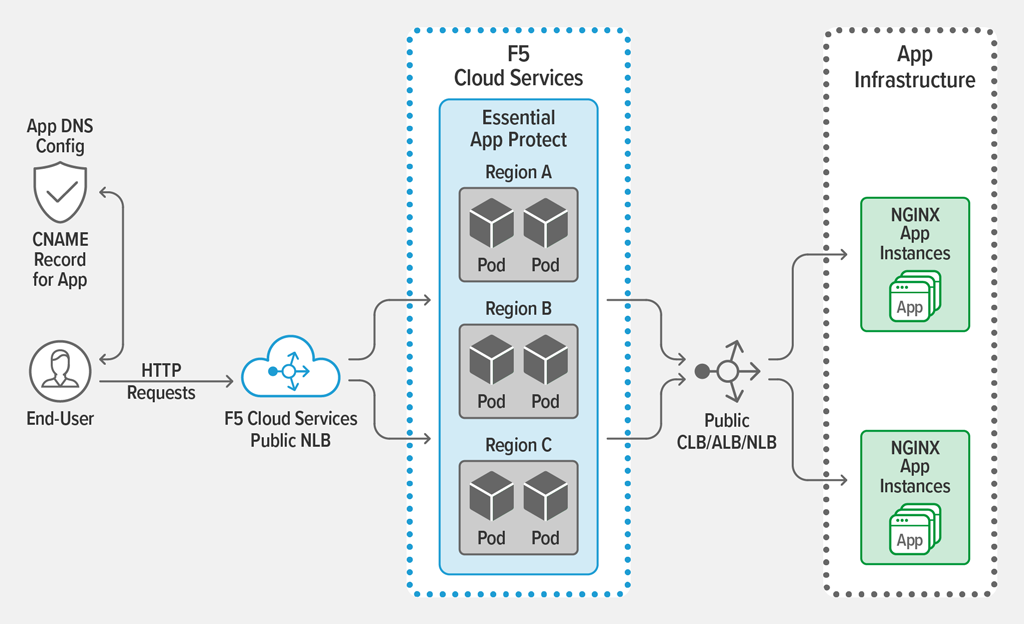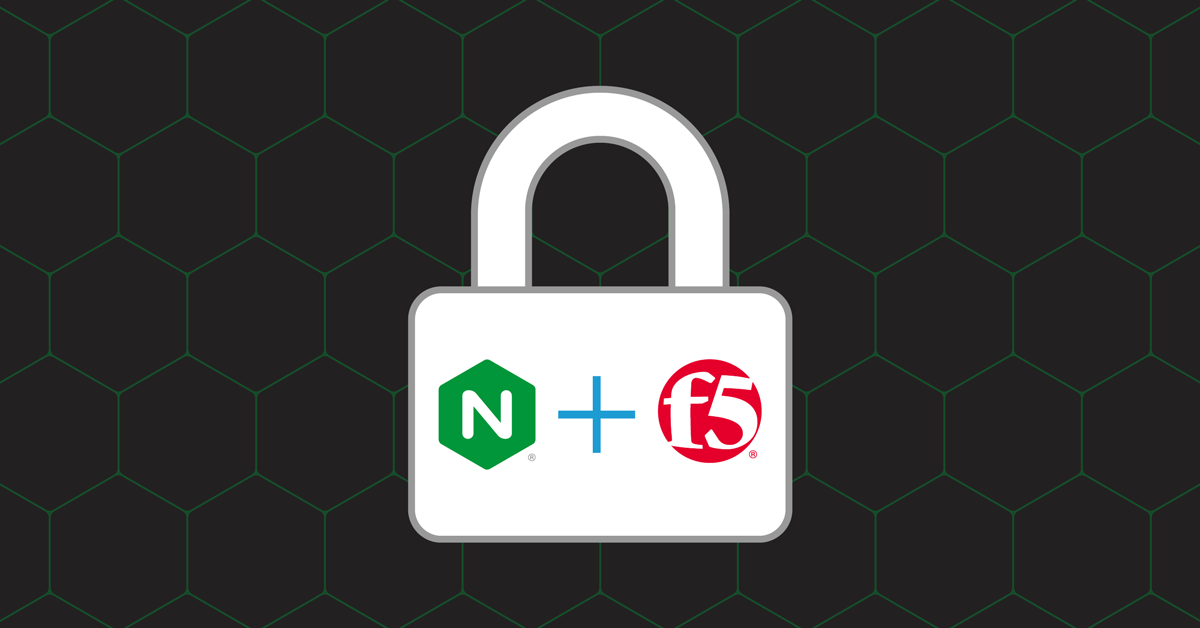Modern applications require modern app security solutions. With the ever‑increasing pace of framework‑based app development, the growth of microservices topologies, and the ever‑changing security landscape, app security is becoming increasingly challenging for developer teams. This is where modern web application firewall (WAF) solutions step in.
F5 Essential App Protect, launched earlier this year, and NGINX App Protect both provide WAF capabilities for NGINX and NGINX Plus by focusing on signature‑based app protection and are built with DevOps and CI/CD in mind. However, they are architected, configured, and deployed in different ways, and serve different purposes depending on your organization’s needs:
- NGINX App Protect runs on NGINX Plus and is deployed as a lightweight software package within your app infrastructure to provide advanced security protection for your apps.
- F5 Essential App Protect is consumed as-a-Service and provisioned in the cloud regions of your choice to provide checkbox simplicity and pre‑configured protection across a number of attack vectors.
In a nutshell, NGINX App Protect runs on NGINX Plus in your app infrastructure, while Essential App Protect is a cloud service that you provision to sit between the users and your app infrastructure. Your particular application requirements dictate which is more appropriate, but a general rule of thumb is that API‑ and Kubernetes‑intensive applications that require high performance benefit from the close proximity of NGINX App Protect running on premises. Long‑tail applications and those without strict performance requirements benefit from the ease and simplicity of F5 Essential App Protect.

The focus of this post is on setting up F5 Essential App Protect as a quick and easy “bolt‑on” app security solution for teams using NGINX and NGINX Plus. Here are some of the unique benefits that make F5 Essential App Protect so powerful:
- Out-of-the-gate security protecting against malicious IP addresses and known bad actors, using intelligent probability‑based rating systems for detecting and mitigating malicious traffic
- Support for hybrid and multi‑cloud deployments across multiple app server platforms with consistent config via UI, APIs, or Ansible playbooks
- Traffic scrubbing, obfuscation of services and endpoints from bad actors, bandwidth reduction, and built‑in DDoS mitigation
- Increased agility from a SaaS delivery model and flexible pricing options offered in the AWS Marketplace or F5 Cloud Services portal
- Real‑time app security insights from advanced analytics and visualizations
#blog #tech #security #f5 essential app protect
